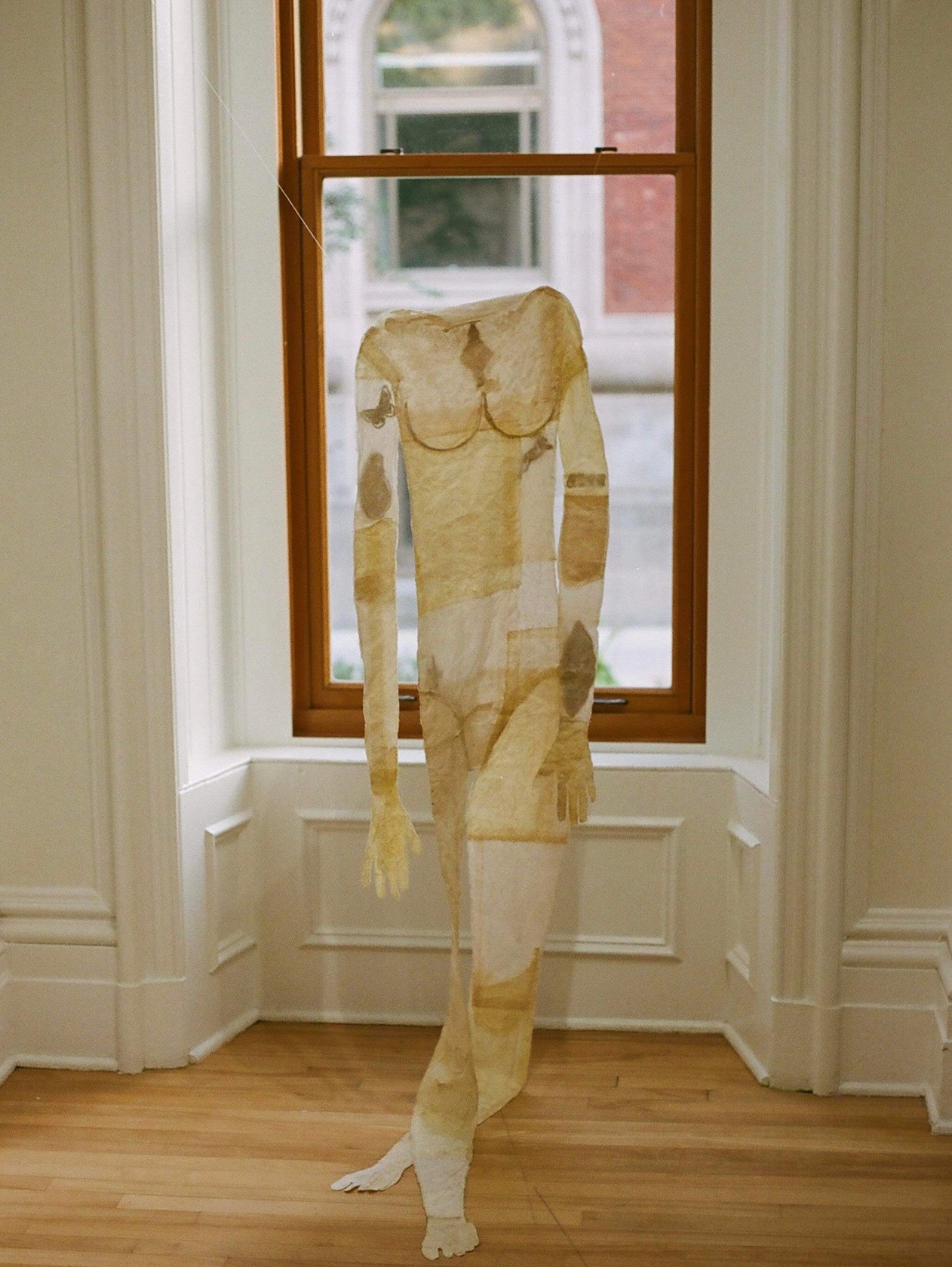Maya Gilmour
This Was a Home
2022
Peau Fantôme
2021
 This Was a Home, Photopolymer prints on cheesecloth; metal wire. Approx. 1’ x 6’.
This Was a Home, Photopolymer prints on cheesecloth; metal wire. Approx. 1’ x 6’.
Artist statement
Dust pans collecting evidence;
Haphazardly scattered across the floor
Peeled or flayed—
Proof of what you were and what is left behind.
This Was a Home and Peau Fantôme, are two installations in conversation with one another. Their emptiness communicates tender moments of remembrance and transience, despite being from different species altogether. Their ‘skins’, printed with photopolymer on cheesecloth, depict the grotesque and uncanny aspects of reconstructed memories, wherein only the essence of memories remains. Devoid of viscera, only a carcass and a shell of what once was
They are examinations of the body through empty vessels, as echoes of bodies memorialized in space long after being outgrown by its tenant. Like peeling glue from your fingertips--skin, shells, carcass remain as the ephemeral and liminal space of transitions, imprinted with the past, embedded within the semiotics of growth—outgrown—grief, and change. Skin (human or otherwise) and shells are continually left behind, frozen in time, etched and imprinted with every experience, every reincarnation or aspect of its ‘wearer’. The vessel is, therefore, both a facilitator for transformation and a receptacle of the past—of touch, of labour, of traumas and of care. In this transiency, the body remembers.
 Peau Fantôme, Patchwork Japanese paper; lasercut plywood, Approx 1.5’ x 6.5’
Peau Fantôme, Patchwork Japanese paper; lasercut plywood, Approx 1.5’ x 6.5’

Artist’s biography
Maya Gilmour is an interdisciplinary artist based in Montreal (Québec) currently finishing her undergraduate degree in Studio Arts at Concordia University. In 2022, she was the recipient of the Lise-Helene Larin Scholarship in Drawing and has shown work at the Alain Piroir Studio-Gallery, Concordia University’s VAV Gallery, as well as Galerie Erga. In September 2023, she had her first solo exhibition at Fais-Moi L’Art in Montréal.
Maya Gilmour’s artistic practice navigates the intersections between fiber work, print media, and drawing with an emphasis on the haptics of material practice, tenderness and care. Her work negotiates human-animal reciprocities, anthropomorphism, notions of the abject or the grotesque body to explore intersections of human/non-human consciousnesses, and instances wherein certain archetypes can be subverted or enhanced through their exchanges. Through the hybridization of humans and non-human animals in her paper, textile, and print-based works, she explores both humanity and inhumanity by virtue of animals, their literary and metaphorical representations, transposing or challenging these narratives into her ‘pseudo-human’ creatures. These ‘tender vessels’ or ‘abject bodies’ become a lens through which stories are communicated and mirrors reflect back encounters with the animal in everyday life.

